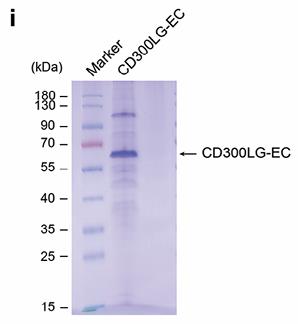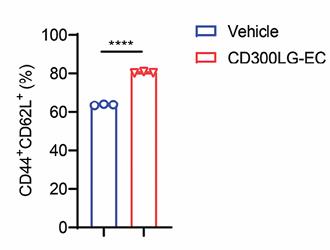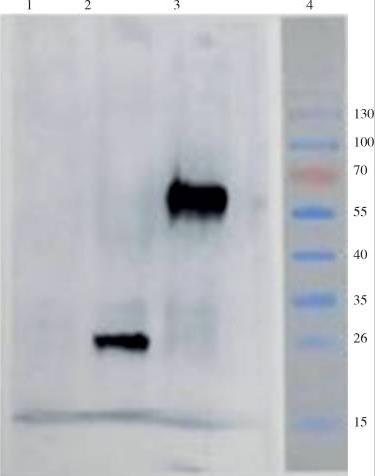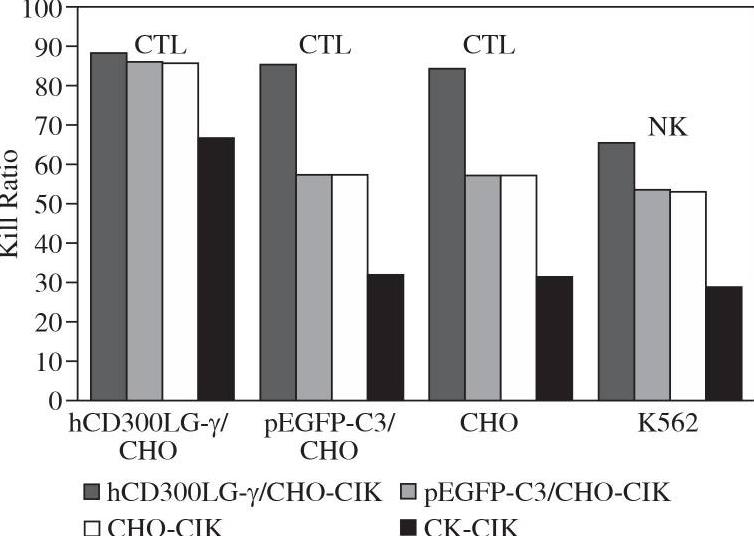Recombinant Human CD300LG protein(Met1-Arg247), His-tagged
| Cat.No. : | CD300LG-7811H |
| Product Overview : | Recombinant Human CD300LG (AAH25395.1) (Met1-Arg247) was expressed in HEK293 with a polyhistidine tag at the C-terminus. |
- Specification
- Gene Information
- Related Products
- Case Study
- Application
- Download
| Species : | Human |
| Source : | HEK293 |
| Tag : | His |
| Protein Length : | Met1-Arg247 |
| Form : | Lyophilized from sterile PBS, pH 7.4. Normally 5 % - 8 % trehalose, mannitol and 0.01% Tween80 are added as protectants before lyophilization. |
| Molecular Mass : | The recombinant human CD300LG consists of 240 amino acids and predicts a molecular mass of 26.2 KDa. It migrates as an approximately 28 KDa band in SDS-PAGE under reducing conditions. |
| Endotoxin : | < 1.0 EU per μg of the protein as determined by the LAL method. |
| Purity : | > 95 % as determined by SDS-PAGE |
| Storage : | Samples are stable for up to twelve months from date of receipt at -20°C to -80°C. Store it under sterile conditions at -20°C to -80°C. It is recommended that the protein be aliquoted for optimal storage. Avoid repeated freeze-thaw cycles. |
| Reconstitution : | It is recommended that sterile water be added to the vial to prepare a stock solution of 0.2 ug/ul. Centrifuge the vial at 4°C before opening to recover the entire contents. |
| Gene Name | CD300LG CD300 molecule-like family member g [ Homo sapiens ] |
| Official Symbol | CD300LG |
| Synonyms | CLM9; CLM-9; TREM4; TREM-4; NEPMUCIN |
| Gene ID | 146894 |
| mRNA Refseq | NM_145273.3 |
| Protein Refseq | NP_660316.2 |
| MIM | 610520 |
| UniProt ID | Q6UXG3 |
| ◆ Recombinant Proteins | ||
| CD300LG-3052H | Recombinant Human CD300LG Protein, MYC/DDK-tagged | +Inquiry |
| RFL31598BF | Recombinant Full Length Bovine Cmrf35-Like Molecule 9(Cd300Lg) Protein, His-Tagged | +Inquiry |
| CD300LG-8580H | Recombinant Human CD300LG protein, hFc-tagged | +Inquiry |
| CD300LG-3077M | Recombinant Mouse CD300LG Protein | +Inquiry |
| CD300LG-1841H | Recombinant Human CD300LG Protein (Leu19-Arg247), C-His tagged | +Inquiry |
| ◆ Cell & Tissue Lysates | ||
| CD300LG-1061HCL | Recombinant Human CD300LG cell lysate | +Inquiry |
| CD300LG-957RCL | Recombinant Rat CD300LG cell lysate | +Inquiry |
Case 1: Yang Z, et al. Adv Sci (Weinh). 2024
CD8+ T cells are key in cancer defense but can become exhausted. Increasing memory T cells improves their durability and tumor-fighting ability. Tumor-associated monocytes (TAMos) help create memory-like TCM cells with enhanced responses. Using L-NMMA can prevent TAMos from hindering T-cell growth without affecting TCM formation. These enhanced T cells show greater persistence and antitumor effects, with CD300LG protein aiding in their development. TAMos thus play a crucial role in boosting T-cell cancer immunity.

Fig1. Coomassie-stained SDS-polyacrylamide gel of recombinant CD300LG-EC.

Fig2. OT-I cells were cultured in the presence of recombinant CD300LG-EC for 48 h during T cell activation, followed by flow cytometry.
Case 2: Wang Q, et al. Cent Eur J Immunol. 2017
To explore how CD300LG-γ affects the cytotoxic power of CIK cells, researchers introduced a human CD300LG-γ expression plasmid into CHO cells. This expression was confirmed through various methods. They then induced CIK cells using PBMCs, which were exposed to lysates from these modified CHO cells and other controls. Testing their ability to kill different cell lines, results showed that CD300LG-γ induction substantially boosted the CIK cells' cytotoxic activity, particularly against specific target cells. Overall, this indicates that CD300LG-γ significantly enhances CIK cell killing efficiency.

Fig1. Western blot analysis of protein expression.

Fig2. The killing activities of induced CIK cells of CTL and NK.

Fig1. Schematic representation of the associations of the Arg82Cys polymorphism with fasting or postprandial high-density lipoprotein (HDL) subclasses and HDL composition. (Sophia Metz, 2022)
Not For Human Consumption!
Inquiry
- Reviews
- Q&As
Ask a Question for All CD300LG Products
Required fields are marked with *
My Review for All CD300LG Products
Required fields are marked with *
Inquiry Basket


